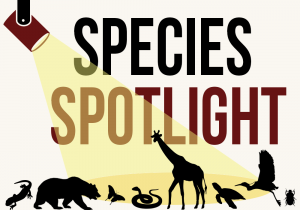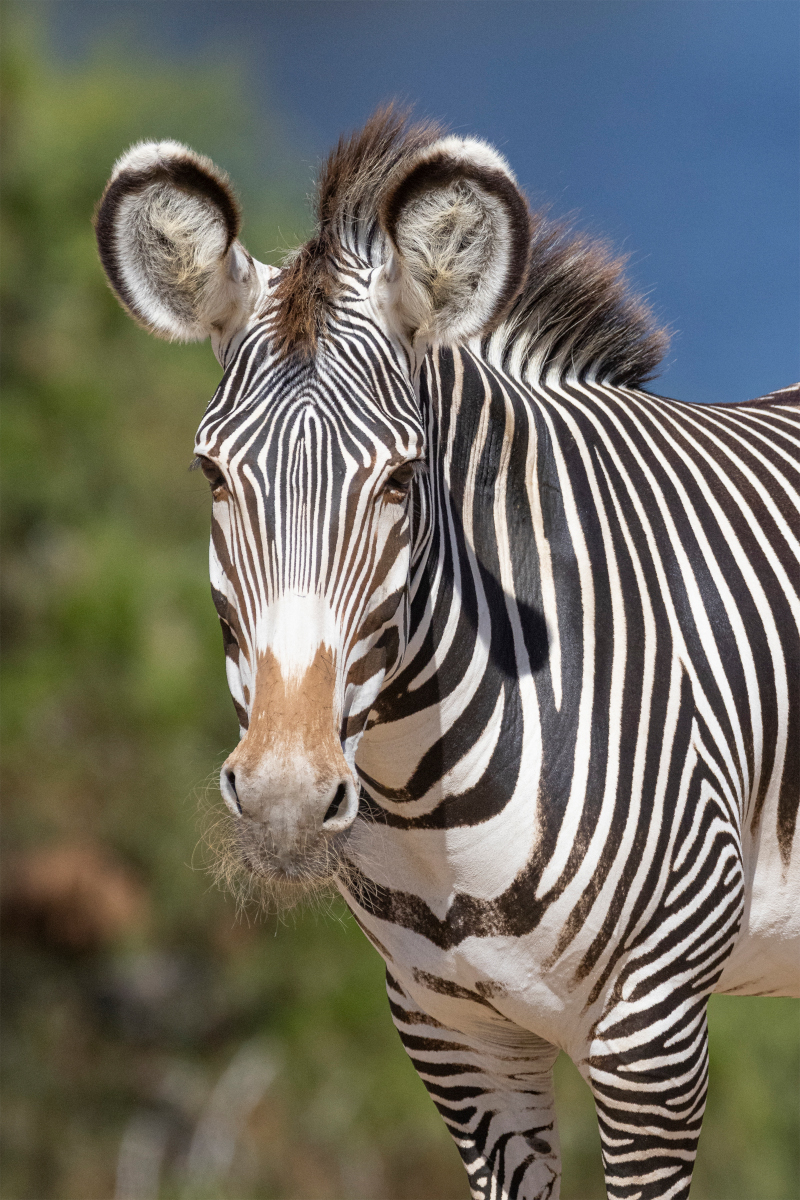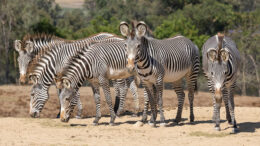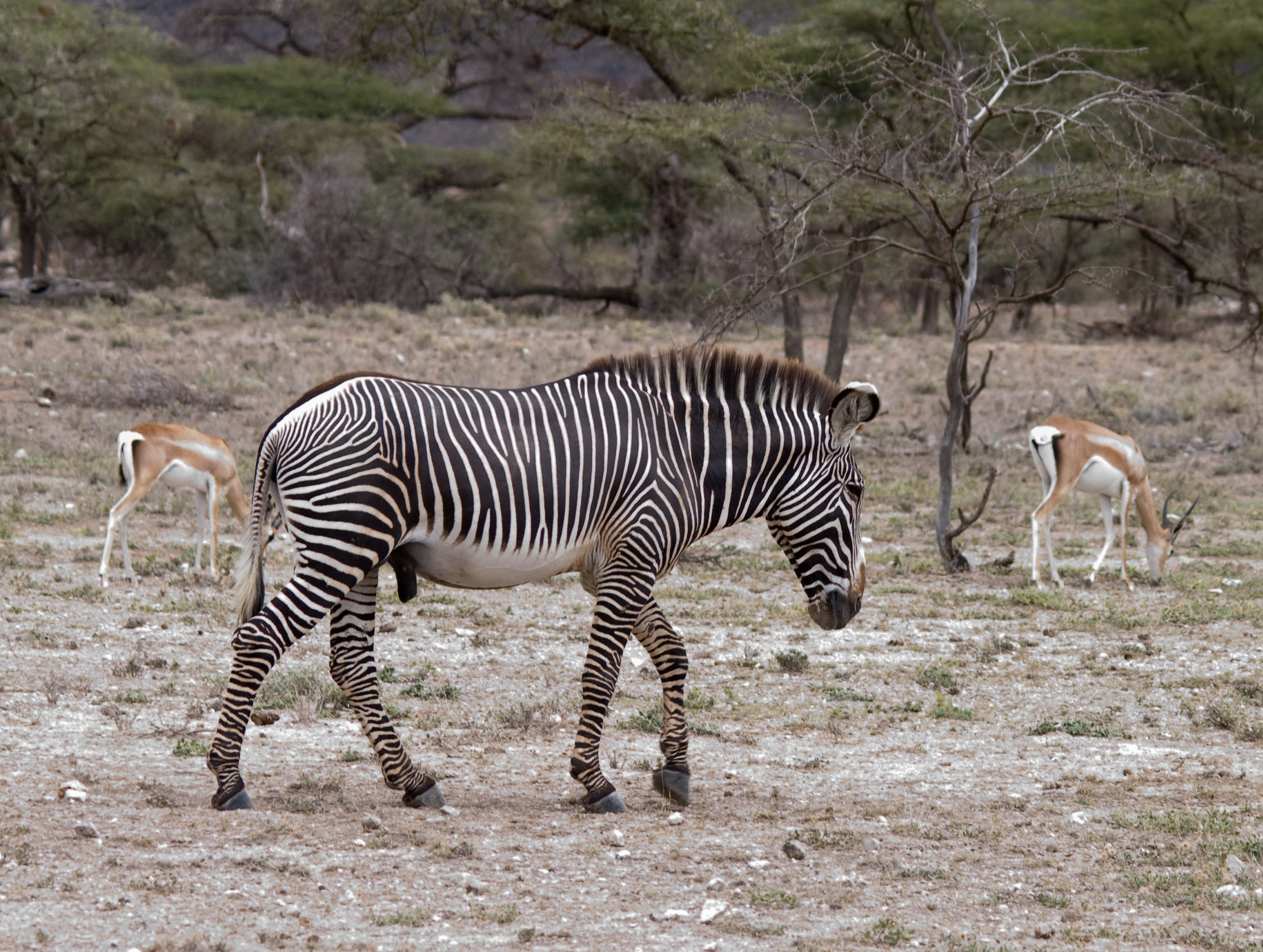 The Grevy’s zebra, also known as the imperial zebra, is the largest living wild equid and the most threatened of the three species of zebra.
The Grevy’s zebra, also known as the imperial zebra, is the largest living wild equid and the most threatened of the three species of zebra.
Unlike the other two species — plains and mountain zebras — Grevy’s zebras do not have a herd system, and males and females have no permanent bonds. Stallions establish territories, with mares crossing through them to breed and foal. Once the foals are old enough to travel, the mares usually leave the protection of the stallions’ territory to continue their nomadic lifestyle.
Species name:
Grevy’s zebra (Equus grevyi)
Description:
The long-legged Grevy’s zebra is the largest of all zebras, weighing up to 1,000 pounds and measuring up to 5 feet high at the shoulder. It has the skinniest stripes of any zebra, which run all the way down to a white belly and rump. (Other zebra species have stripes on their belly.) Grevy’s zebras have long necks with prominent, erect manes, and their long, narrow heads give them a mule-like appearance. They’re also recognizable by their large, rounded ears and brown muzzles.

Where it’s found:
Grevy’s zebras live in semi-arid grassland habitats in Kenya, Ethiopia and Somalia.
IUCN Red List status:
Endangered. Their world population has declined from 15,000 in the 1970s to only around 2,250 today.
Major threats:
While Grevy’s zebras can run up to 35 miles per hour, there are some threats — loss of habitat, poaching and disease — that they can’t outrun. Habitat loss in an already restricted range is a serious threat. They must compete with other wildlife and domestic livestock for grazing land and water. The endangered population also has been ravaged by anthrax outbreaks.
Notable conservation programs:
San Diego Zoo Wildlife Alliance is a member of the Grevy’s Zebra Trust, an independent wildlife conservation organization in Kenya whose Healing Rangelands program works to revitalize local grazing management and rangeland restoration. Partnering to restore healthy rangelands benefits livestock-based livelihoods, provides better water access for zebras, and advances protection of natural spaces for all who depend on them.
Every weekend at the San Diego Zoo, we offer guests an opportunity to feed the Masai giraffes for a $10 donation. The money raised goes to the Northern Rangelands Trust in Kenya and the Grevy’s Zebra Trust, both of which have a major focus on helping zebras. Through the generosity and participation of guests, donations have brought much-needed help in vaccinating zebras against anthrax in Kenya and funding other needs.
My favorite experience:
I remember a time we were hosting one of our field research partners from Kenya at the San Diego Zoo Safari Park. This researcher works every day on Grevy’s zebra conservation, but rarely gets to appreciate this incredible species up close. During his visit, we were able to take him to see our large thriving herd and watch him be captivated by their huge ears, pencil stripes and impressive size. Helping people experience wildlife is something we do every day at the Safari Park, but having the opportunity to share Grevy’s zebras with a partner who helps protect them in their native habitat was very special.
What else do we need to understand or do to protect this species?
The loss of this endangered species from their native habitats would have devastating consequences for all other species in that ecosystem. Grevy’s zebras are beneficial to other wild grazers — such as wildebeest, antelope and ostriches — because they clear off the tops of coarse grasses that are difficult for other herbivores to digest.
Protecting the rangelands of Kenya, Ethiopia and Somalia is vital to secure a safe habitat for a thriving Grevy’s zebra population. With only 1% of this habitat formally protected, expanding the range will be vital to the conservation of this species.
The opinions expressed above are those of the author and do not necessarily reflect those of The Revelator, the Center for Biological Diversity or their employees.
![]()
Previously in The Revelator:
Species Spotlight: Sunda Clouded Leopard, the Ethereal and Declining ‘Tree Tiger’



